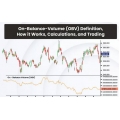Stock Fundamental Analysis with Excel (Total size: 1.54 GB Contains: 7 folders 52 files)
 Click to enlarge |
|
Requirements
✅Spreadsheet software such as Microsoft Excel® is required.
✅Practical example spreadsheet provided with the course.
✅Prior basic spreadsheet software knowledge is useful but not required.
Description
Full Course Content Last Update 01/2019
Learn stock fundamental analysis through a practical course with Microsoft Excel® using Apple Inc. data for historical analysis. It explores main concepts from basic to expert level which can help you achieve better grades, develop your academic career, apply your knowledge at work or do your research as experienced investor. All of this while exploring the wisdom of Nobel Prize winners and best practitioners in the field.
Become a Stock Fundamental Analysis Expert in this Practical Course with Excel
✅Understand main financial statements such as balance sheet, income statement and cash flow statement.
✅Interpret financial ratios to analyze operating activities, investing activities, liquidity, solvency and profitability.
✅Comprehend investment valuation ratios to assess relative magnitudes of stock price or enterprise value to key financial statements numerical values and corresponding yields.
✅Estimate cost of equity through capital asset pricing model (CAPM), Fama-French three factors model or arbitrage pricing theory model (APT) and cost of capital through weighted average cost of capital model (WACC).
✅Assess economic profit through economic value added model (EVA®) and observed market value added model (MVA).
✅Approximate theoretical stock price through discounted cash flow models (DCF) such as discounted dividends model (DDM), discounted free cash flow to equity model (DFCFE) and discounted free cash flow to firm model (DFCFF).
✅Estimate stock option prices through Black and Scholes model, one-step binomial tree model, two-steps binomial tree model and Monte Carlo Simulation method (MCS).
Become a Stock Fundamental Analysis Expert and Put Your Knowledge in Practice
Learning stock fundamental analysis is essential for finance careers in areas such as equity research, investment banking, private equity or venture capital. It is also indispensable for academic careers in finance or business research. And it is necessary for experienced investors research of stock fundamentals.
But as learning curve can become steep as complexity grows, this course helps by leading you step by step using Apple Inc. data for historical analysis and to achieve greater effectiveness.
Content and Overview
This practical course contains 49 lectures and 9 hours of content. It’s designed for all stock fundamental analysis knowledge levels and a basic understanding of Microsoft Excel® is useful but not required.
At first, you’ll learn how to perform stock fundamental analysis operations using built-in functions and array calculations. Next, you’ll learn how to do random number generation for option pricing calculation using Microsoft Excel® Add-in.
Then, you’ll define financial statements. For financial statements, you’ll define balance sheet, income statement and cash flow statement.
After that, you’ll define financial ratios and compare them with historical average and competitor. For financial ratios, you’ll define operating activities, investing activities, liquidity, solvency and profitability areas. For models based on financial ratios, you’ll define DuPont analysis, Altman Z-Score and Piotroski F-Score.
Later, you’ll define investment valuation ratios and compare them with historical average, competitor, market benchmark and risk-free rate of return. For investment valuation ratios, you’ll define price ratios, enterprise value ratios and yield ratios.
Next, you’ll define cost of equity. For cost of equity, you’ll define capital asset pricing model (CAPM), Fama-French three factors model and arbitrage pricing theory model (APT). Then, you’ll define cost of capital. For cost of capital, you’ll define weighted average cost of capital model (WACC).
After that, you’ll define economic profit. For economic profit, you’ll define economic value added model (EVA®) and observed market value added model (MVA). Later, you’ll estimate theoretical stock price through discounted cash flow models (DCF). For discounted cash flow models (DCF), you’ll define discounted dividends model (DDM), discounted free cash flow to equity model (DFCFE) and discounted free cash flow to firm model (DFCFF).
Finally, you’ll define financial options. For financial options pricing, you’ll define Black and Scholes model, one-step binomial tree model, two-steps binomial tree model and Monte Carlo simulation method (MCS).
Who this course is for:
✅Undergraduate or postgraduate at any knowledge level who wants to learn about stock fundamental analysis using Microsoft Excel®.
✅Finance professional or academic researcher who wishes to deepen your knowledge in equity research.
✅Experienced investor who desires to research stock fundamentals.
✅This course is NOT about “get rich quick” trading systems or magic formulas.
What you'll learn
✅Understand main financial statements such as balance sheet, income statement and cash flow statement.
✅Interpret financial ratios to analyze operating activities, investing activities, liquidity, solvency and profitability.
✅Comprehend investment valuation ratios to assess relative magnitudes of stock price or enterprise value to key financial statements numerical values and corresponding yields.
✅Estimate cost of equity through capital asset pricing model (CAPM), Fama-French three factors model or arbitrage pricing theory model (APT) and cost of capital through weighted average cost of capital model (WACC).
✅Assess economic profit through economic value added model (EVA®) and observed market value added model (MVA).
✅Approximate theoretical stock price through discounted cash flow models (DCF) such as discounted dividends model (DDM), discounted free cash flow to equity model (DFCFE) and discounted free cash flow to firm model (DFCFF).
✅Estimate stock option prices through Black and Scholes model, one-step binomial tree model, two-steps binomial tree model and Monte Carlo Simulation method (MCS).
Proof of content,please see the images
Delivery to your PayPal email address within 24 Hours of payment confirmation.
Completing units:
![]() Stock Fundamental Analysis with Excel (Total size: 1.54 GB Contains: 7 folders 52 files)
Stock Fundamental Analysis with Excel (Total size: 1.54 GB Contains: 7 folders 52 files)
To buy without signing in contact us here:
Market Sales Price: $299,but we sell lot more lower than that to share the opportunity with you!
Our Policies
A. Product Quality
- We ensure that the quality of the course is good, and we update them regularly to help you keep update.
- If there is a problem you can not use, please let us know so we can fix it soon or if there is any notification, we will inform you immediately.
B. Shipping Method
- After receiving your payment, we will send you a link to access and download the course. If our team is not in the office, please wait for us about 8 hours to come back.
C. Refund Policy
We do not accept refund after you got the link and download the course.
We will refund your money in case of:
- Item is not as described
- Item doesn’t work the way it should
- Item support extension can’t used
Serving Professional Traders Since 2008
Once purchased I will email you the files within 20 minutes and not more than 48 hours to your email, if there a delay, please be patience receiving your files
Your Review: Note: HTML is not translated!
Rating: Bad Good
Enter the code in the box below:

 Categories
Categories Information
Information Specials
Specials




-38x38.jpg)

-38x38.jpg)
-38x38.jpg)
-38x38.jpg)
-38x38.jpg)
-38x38.jpg)

-38x38.jpg)



-38x38.jpg)


-38x38.jpg)
-38x38.jpg)
-38x38.jpg)
 Featured
Featured

























 Shopping Cart
Shopping Cart Bestsellers
Bestsellers






-38x38.jpg)































-38x38.jpg)









-120x120.jpg)





-120x120.jpg)
